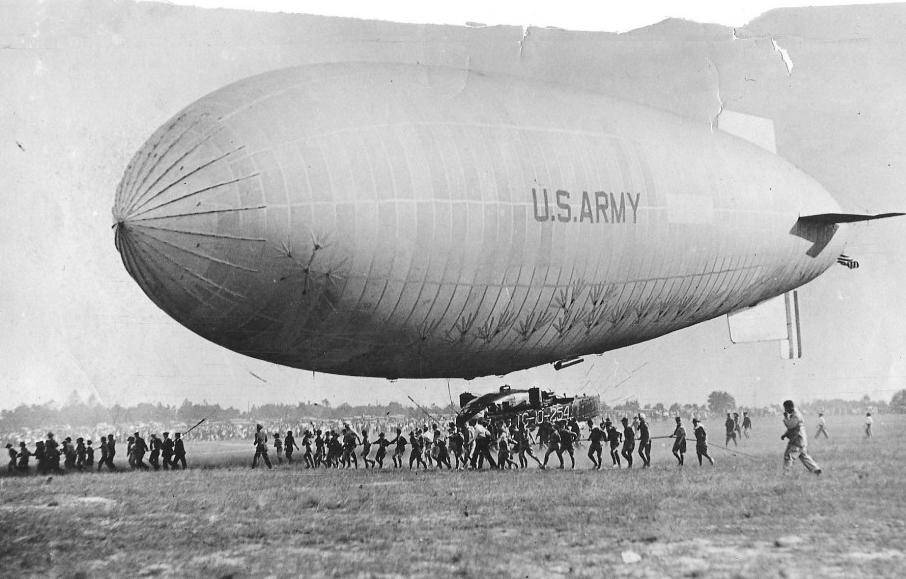
World War II Technology: Air Weapons--Lighter-than-air Craft

Figure 1.--European militaries generally gave up on lighter-than-air craft during World War I. The United States showed some continued interest. This is a U.S. Army blimp, but it was the U.S. Navy that showed the greatest interest. This 1927 press photo shows Army blimp TC-254 from Langley Field, Virginia. It is being landed by Boy Scouts at the dedication of Daniel Field, the new airport of Augusta, Georgia.
|
|
Ironically, one World War I technology developed by the Germans, lighter than air craft, proved to be a valuable Allied assett in the Battle for the Atlantic. The Germans introduced the rigid Zeppelin during World War I, but they proved to be to vulnerable and were taken out of service. In the inter-war era, the Zeppelin s for a while proved to be popular for a while as passenger craft. The Hindenburg disaster put an end to that (1936). The United States, especially the Navy, gave considerable effort to develop the non-rigid blimp.
Some accidents such as the Akron tragedy were widely covered in the mnedia imperilded the program. The Brirish used barge baloons in the Battle of Britain. The Americans used blimps to great effect in the Battle of the Atlantic.
The U.S. Navy's concept was to use the blimp as scouting craft. This proved to be a faulty concept because of the blimp's slow speed and vulnerability. Long range fixed-wing aircraft such as the catalina proved more effective. The blimpos did, however, proved effective in areas where eneny aircraft could not operate.
The long range of the blimp helped to cover the mid-Atlantic gap where there was for some time no air cover. U-boats were unable to operate with Allied aircraft overhead.
U.S. Navy airships were most important in the Atkantic, but they patrolled an area of over three million square miles, including the Atlantic and Pacific oceans and the Mediterranean Sea. They used little fuel and thus had enormous ranges. This enabled them to cover ocean areas and spot U-boas and report its position to both convoy and destroyers. The U.S. Navy's blimps operated from bases on the east and west coasts of the United States, the Gulf of Mexico, the Caribbean, and from Caribbean and Brazilian bases. Later they were deployed from Cuers, France, and Pisa, Italy. Six U.S. Navy K-ships flew across the Atlantic Ocean to Morocco. They set-up a low-altitude antisubmarine barrier across the Strait of Gibraltar.
HBC

Navigate the Boys' Historical Clothing Web Site:
[Return to Main World War II air weapon types page]
[Return to Main World War II air weapons page]
[Return to Main World War II air technology/tactics page]
[Return to Main World War II technology/tactics page]
[Return to Main World War II page]
[Introduction]
[Activities]
[Biographies]
[Chronology]
[Clothing styles]
[Countries]
[Bibliographies]
[Contributions]
[FAQs]
[Glossaries]
[Images]
[Links]
[Registration]
[Tools]
[Boys' Clothing Home]
Created: 8:27 PM 1/25/2010
Last updated: 8:27 PM 1/25/2010



